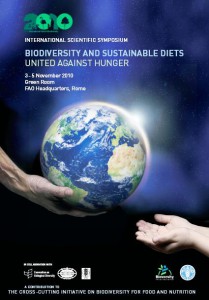- Concentrating management practices on conserving a particular plant species may have bad consequences for other bits of biodiversity. Lessons for crops wild relatives?
- Benin’s farmers ennoble wild yams.
- A Lebanese lunch is an educational experience. Right.
- Paddyomics video. Nothing to do with the Irish. It’s about how IRRI is automating, er, everything about its phenotyping.
- Tamarind’s environmental niche is, in fact, er, niches?
- Different wheat genomes generate distinct protein profiles.
- Phylogenetic relationships of a new Mediterranean lupin.
- Betel nut chewing endangers coral. Kinda. Traditional and all that, but an unpleasant habit nonetheless.
- Our friend Bhuwon and others tell the story of the participatory improvement and formal release of Jethobudho rice landrace in Nepal.
- CGIAR elicits comment on the Agriculture for Improved Nutrition and Health megaprogramme. Until August 1.
- Bacterial diversity boosts maize yields.
Announcing a symposium on Biodiversity and Sustainable Diets
 The first announcement and call for abstracts for the International Scientific Symposium on Biodiversity and Sustainable Diets is out. The symposium will take place 3-5 November 2010 at FAO Headquarters, Rome. But that’s all I know because the link to the announcement on FAO’s website is broken. (I’m writing this on Saturday: hopefully they’ll fix it on Monday.)
The first announcement and call for abstracts for the International Scientific Symposium on Biodiversity and Sustainable Diets is out. The symposium will take place 3-5 November 2010 at FAO Headquarters, Rome. But that’s all I know because the link to the announcement on FAO’s website is broken. (I’m writing this on Saturday: hopefully they’ll fix it on Monday.)
Wednesday: The link now goes to a Word document.
Dangerous foods round-up
Playing follow-up this morning. Just noticed a couple of papers that deal with topics we’ve been considering here over the past couple of weeks. Remember the post about sorghum beer in Africa from a few days back? Well, it turns out it’s not all good news. There had to be a catch, right? And, following our discussion of a paper on the chemical ecology of cassava, there’s a vivid reminder of why detoxifying those tubers is still so important in some parts of Africa. ((BTW, via a comment by Dirk on the original cassava post, I have learned of the existence of a Cassava Cyanide Diseases and Neurolathyrism Network (CCDNN). Thanks, Dirk.))
Nibble: Conservation ag, Sahelian famines, Homegarden fertility, Annals of Botany news roundup, Carrot geneflow, Cyanide in crops, Texas rice breeding
- “…conservation tillage in Europe may indeed have some negative effect on yields, [but] these effects can be expected to be limited: the overall average reduction we found was ca. 4.5%.” Well I guess it’s good to have the data.
- Today’s solution for the Niger famine is fertilizer micro-dosing. I kid you not. But you should read that first link.
- Homegardens good for soil fertility. Well I guess it’s good to have the data.
- Nigel Chaffey’s Plant Cuttings. Priceless.
- “High outcrossing and long-distance pollen dispersal suggest high frequency of transgene flow might occur from cultivated to wild carrots and that they could easily spread within and between populations.” Transgenic carrots? Well I guess it’s good to have the data.
- Kenneth Olsen interviewed on cyanide in plants. Nice enough, but you read about this stuff here first.
- “Rice breeders seek yield advantage.” Do they now.
Nibbles: Wetlands, Cucurbit phylogeny, Herbology, Malnutrition, Fungi, India, Livestock, Ug99, Madagascar, Beer
- Conserving dambos for livelihoods in southern Africa. How many CWRs are found in such wetland habitats around the world, I wonder.
- Cucumis not out of Africa.
- Exploring “the connection between traditional knowledge of herbs, edible and medicinal plants and media networked culture.” And why not.
- PBS video on malnutrition.
- Fungal exhibition at RBG Edinburgh.
- Indian Council on Agricultural Research framing guidelines for private-public partnerships in seed sector. That’ll stop the GM seed pirates.
- Conserve African humpless cattle! They’re needed for breeding.
- UG99 — and crop wild relatives — in the news. The proper news. The one people pay attention to.
- Vanilla lovers better start stocking up.
- Kenyan farmers earning money selling sorghum to brewers. What’s not to like.